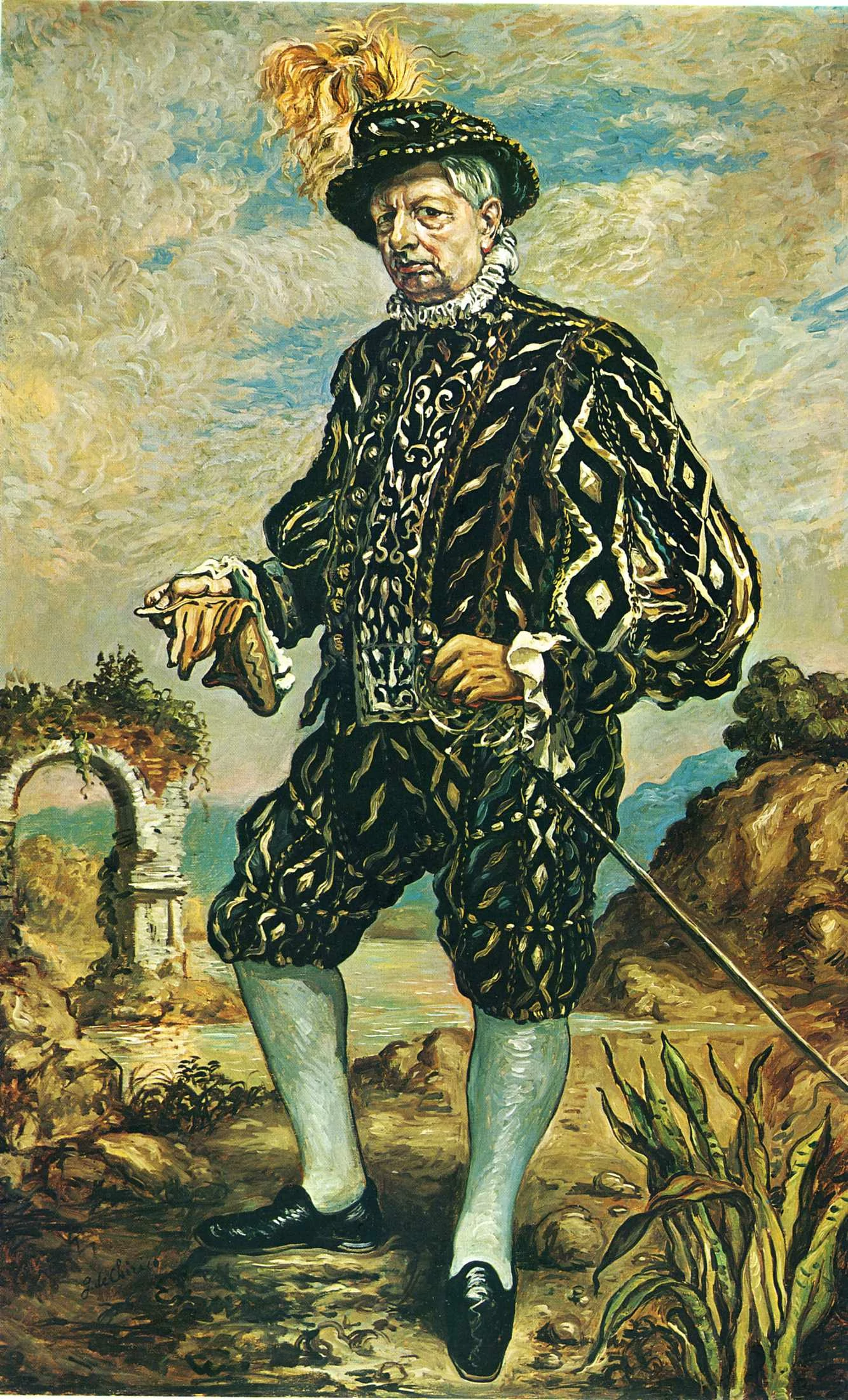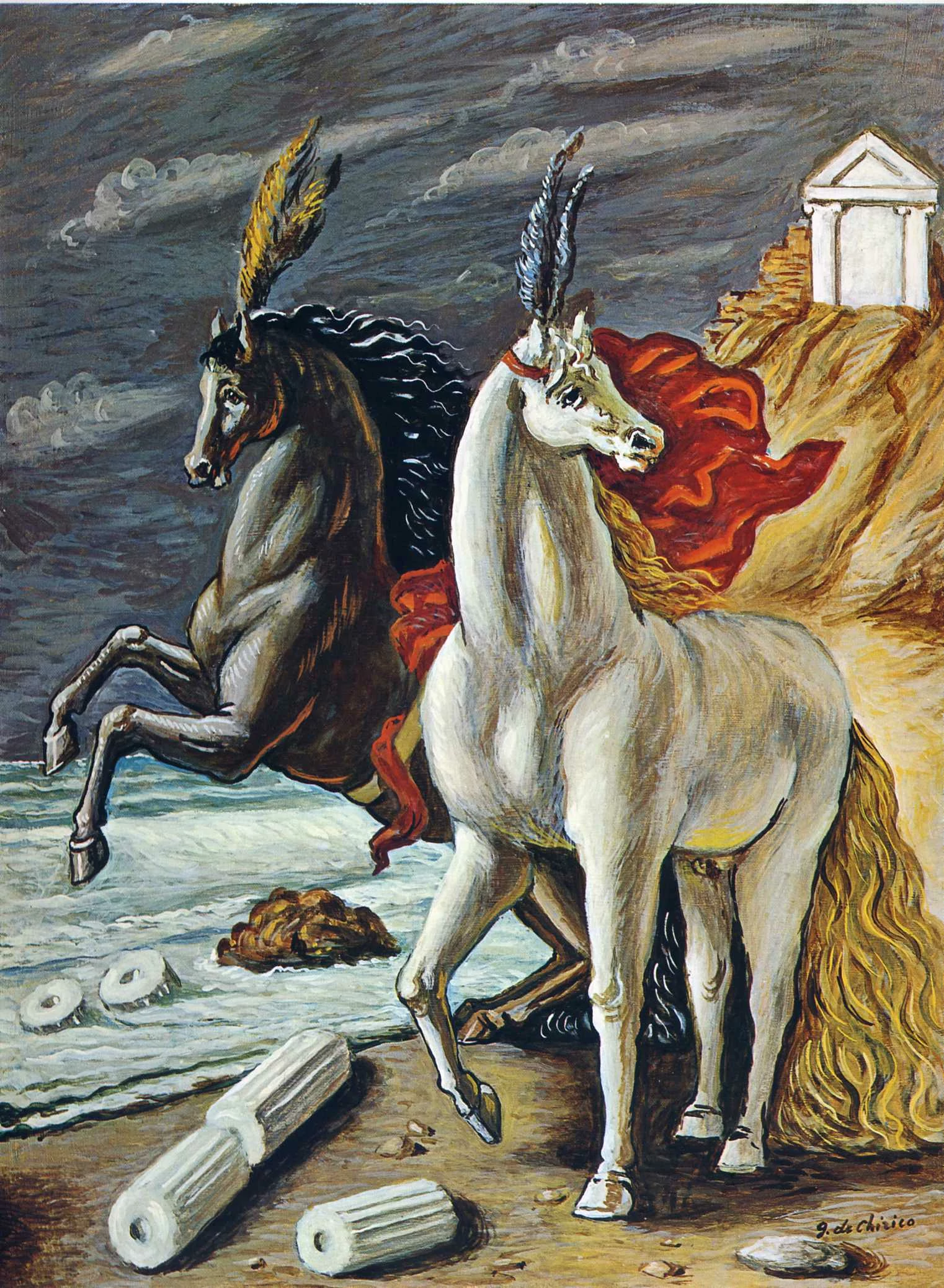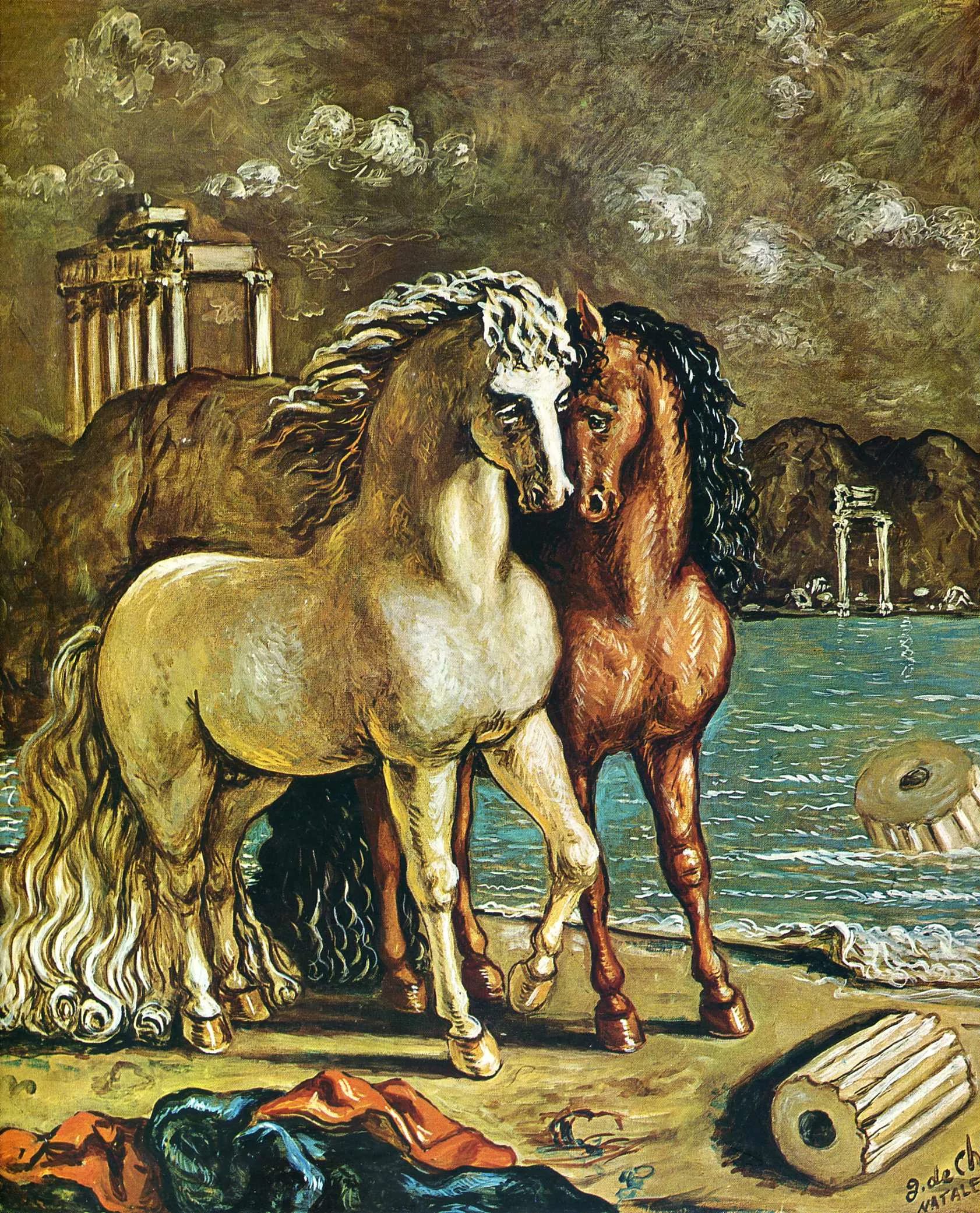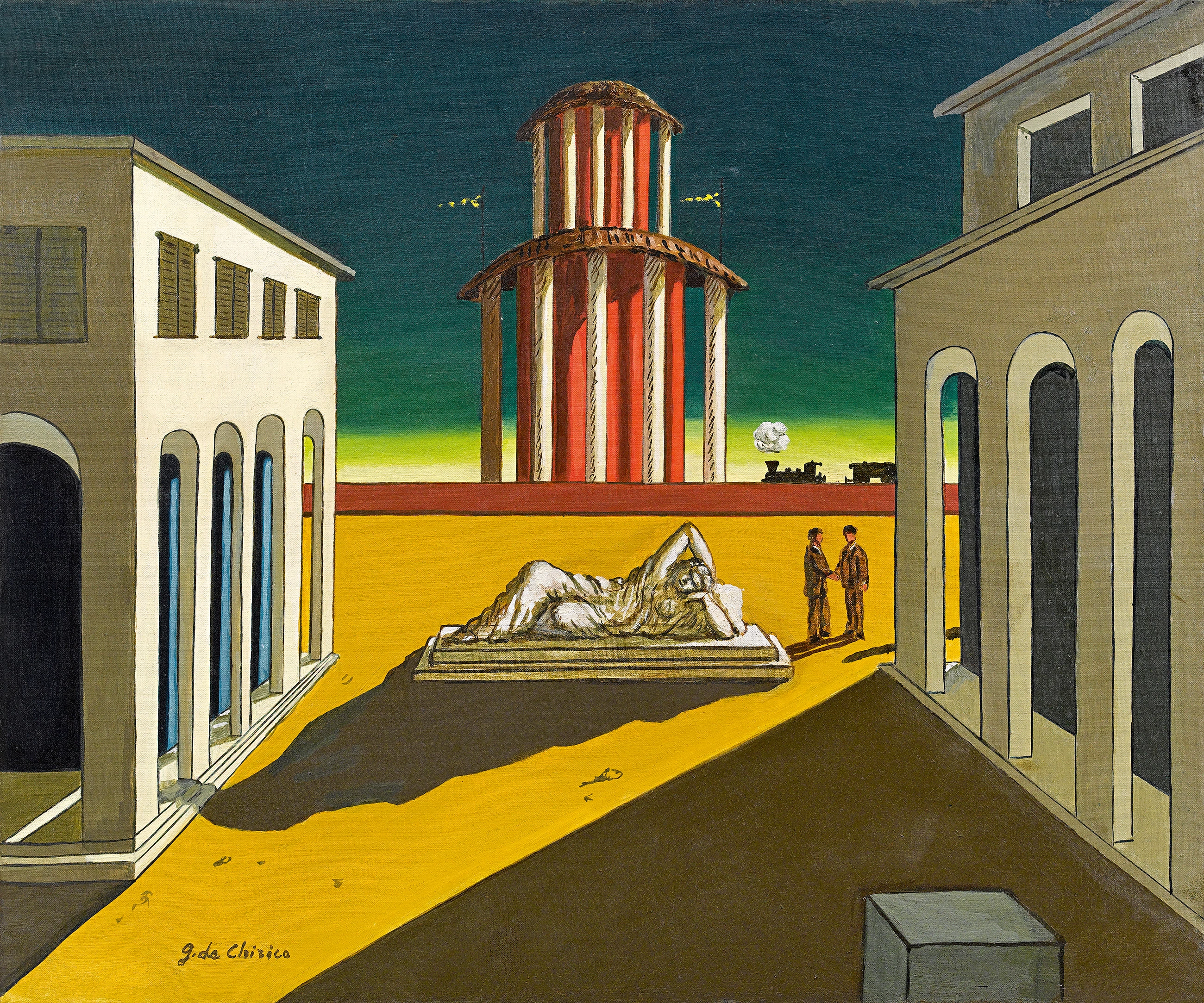Giorgio de Chirico
Enchanted spaces in the city of Nietzsche
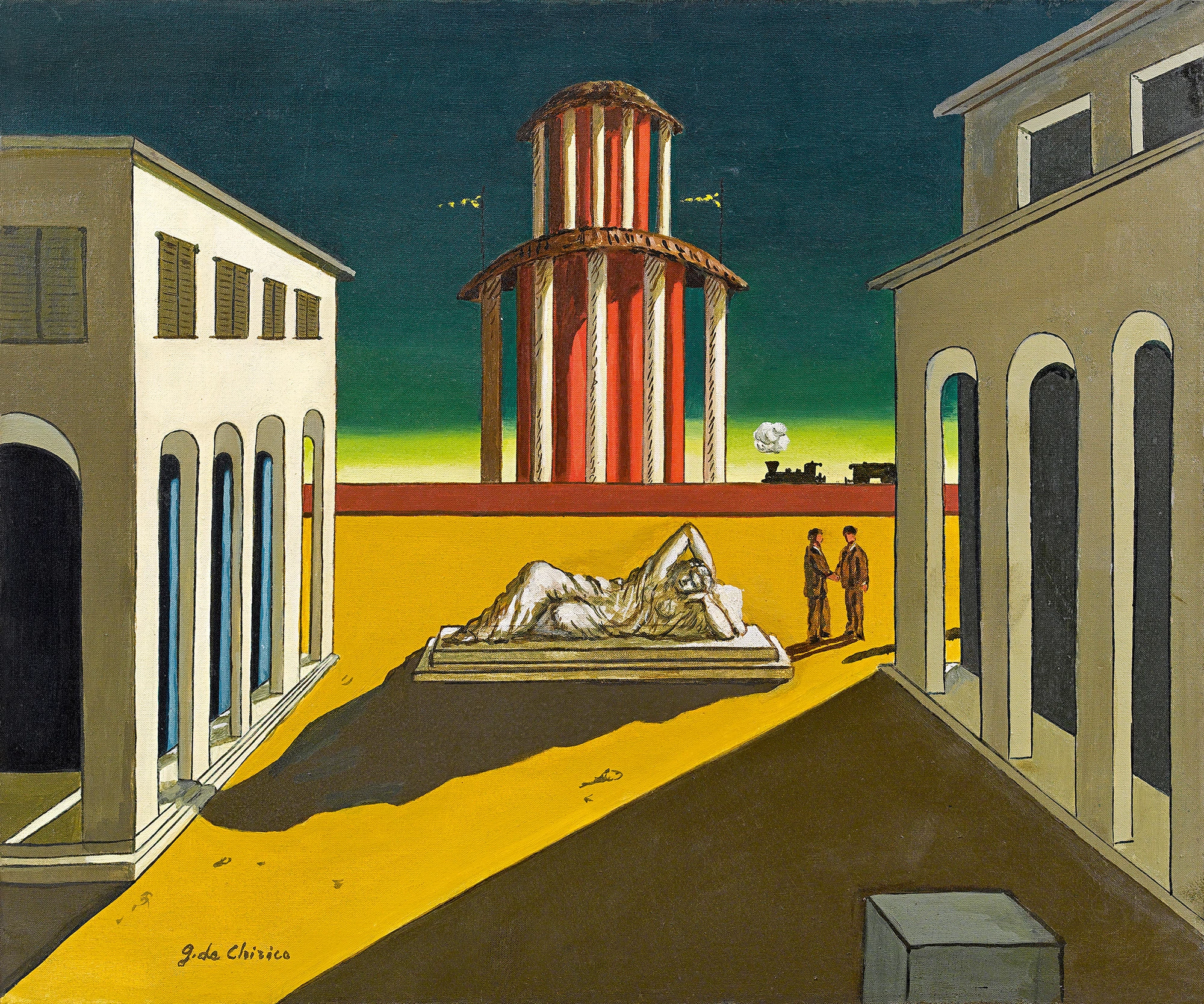
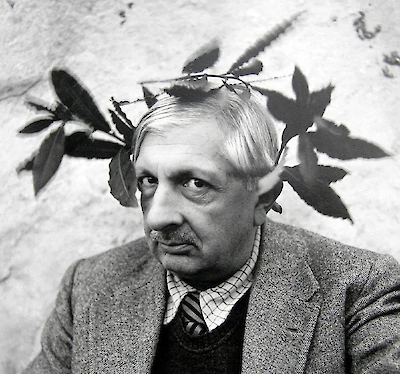


Giorgio de Chirico was born to an Italian family living in Greece, and studied in Athens, Florence, and Munich, where he was influenced by Nietzsche’s philosophy and Arnold Böcklin’s Symbolist art. In 1910, de Chirico moved to Paris where he made contact with Picasso and befriended Guillaume Apollinaire, French poet and leader of the avant-garde’s rejection of poetic worldviews, aesthetic, and language. In Paris de Chirico began to produce troubling, dreamlike pictures of deserted cities, like The Great Tower, The Soothsayer’s Recompense, Mystery and Melancholy of a Street—fantastic combinations of images charged with mystery and haunting iconography.
In 1917, de Chirico met the painter Carlo Carrà, and together they founded a proto-movement they called Metaphysical painting. Although short-lived, it was one of the most original movements in Italian art of the 20th century, still considered by critics to be the high point of de Chirico’s career. Metaphysical art was hugely influential to the developing Surrealist artists, who recognized the expression of the unconscious and nonsensical they aspired to.
But de Chirico was uninterested in shepherding the avant-garde, and in the 1930s, denounced his previous work and began studying the techniques of the old masters. His final paintings walk a weird line between modern painting techniques and neoclassical subject matter—full of horses, still-lifes, and formal portraits. The Surrealists, in particular, hated de Chirico’s later work, but I for one, love it.
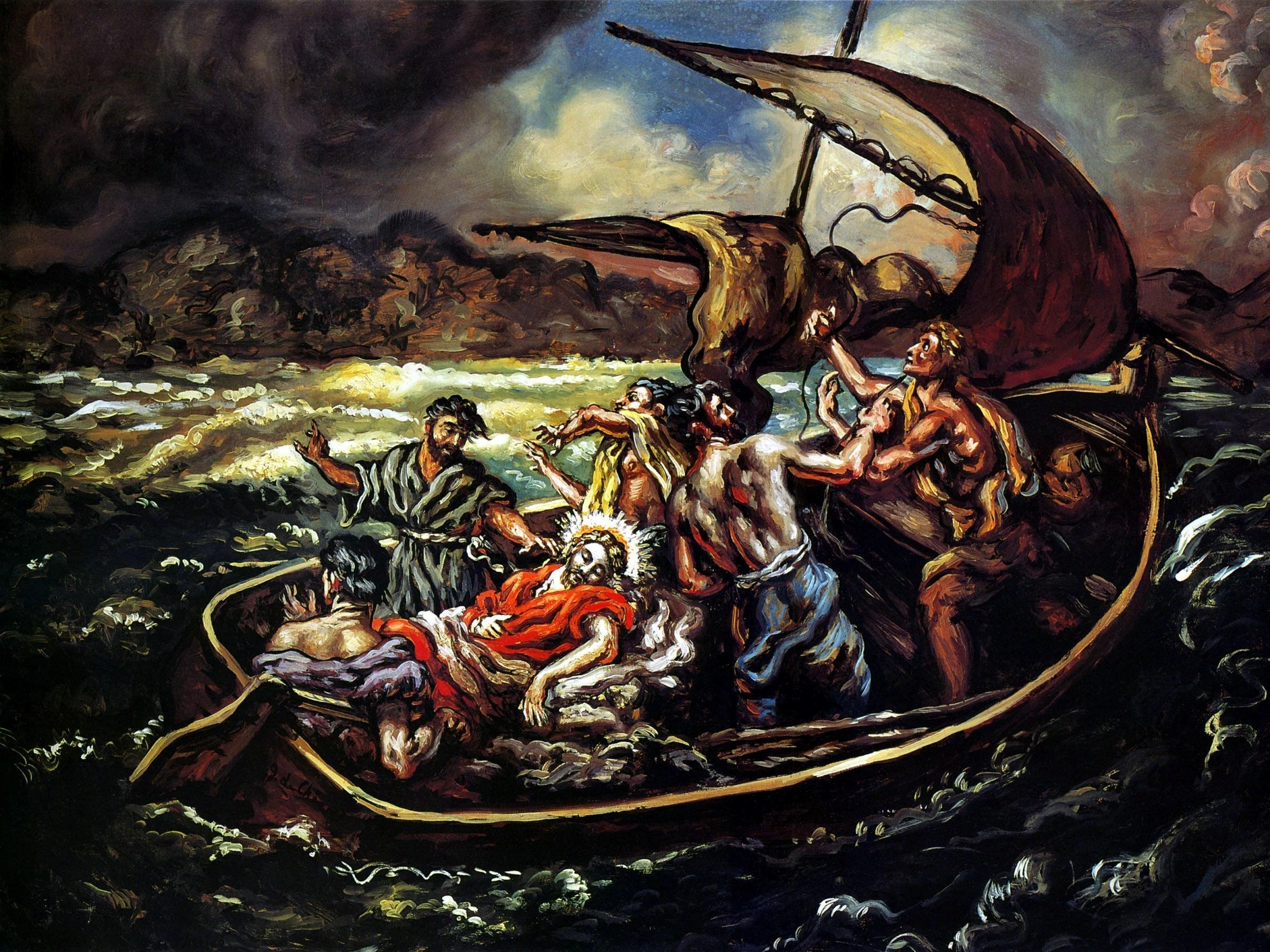

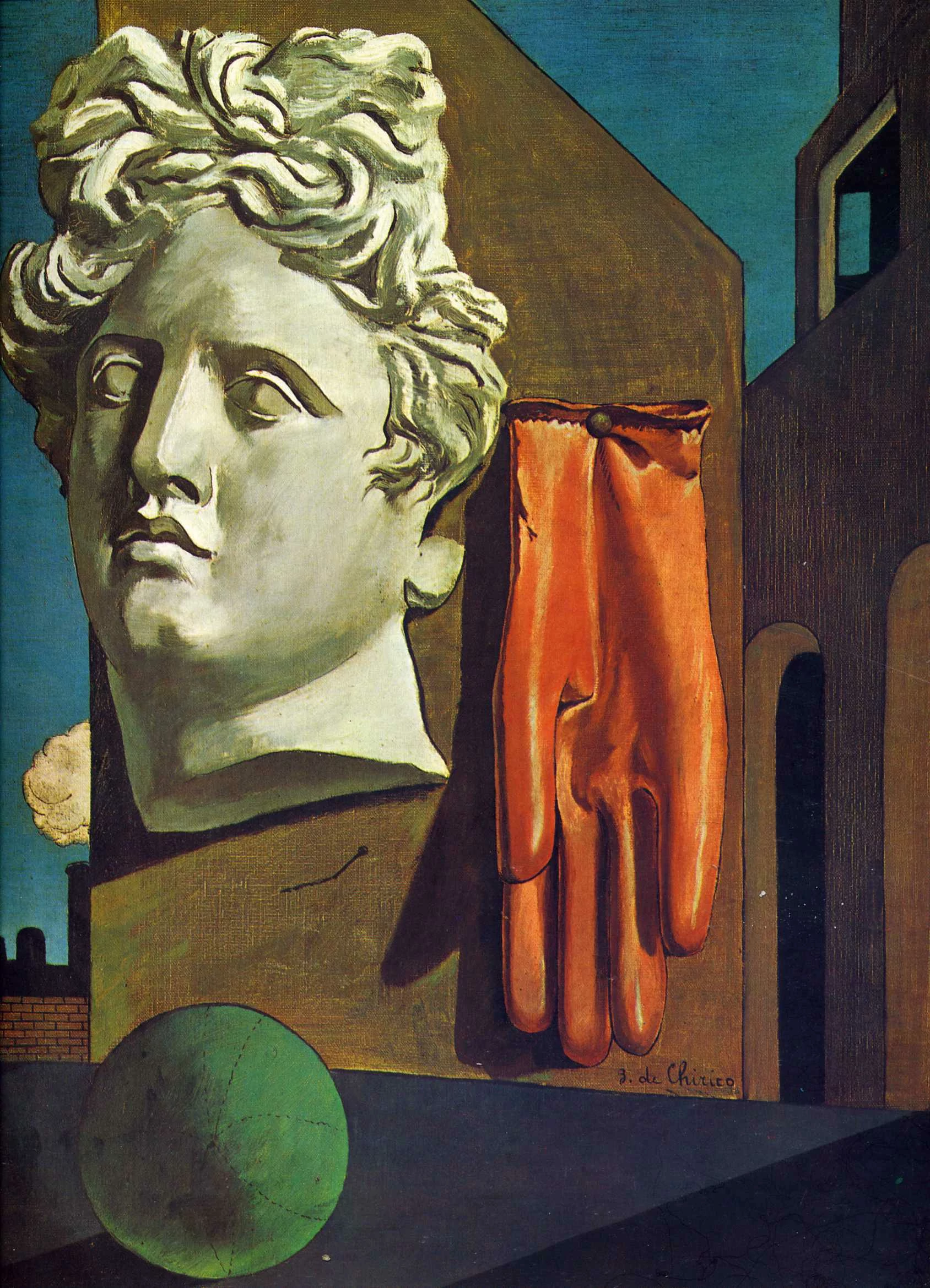
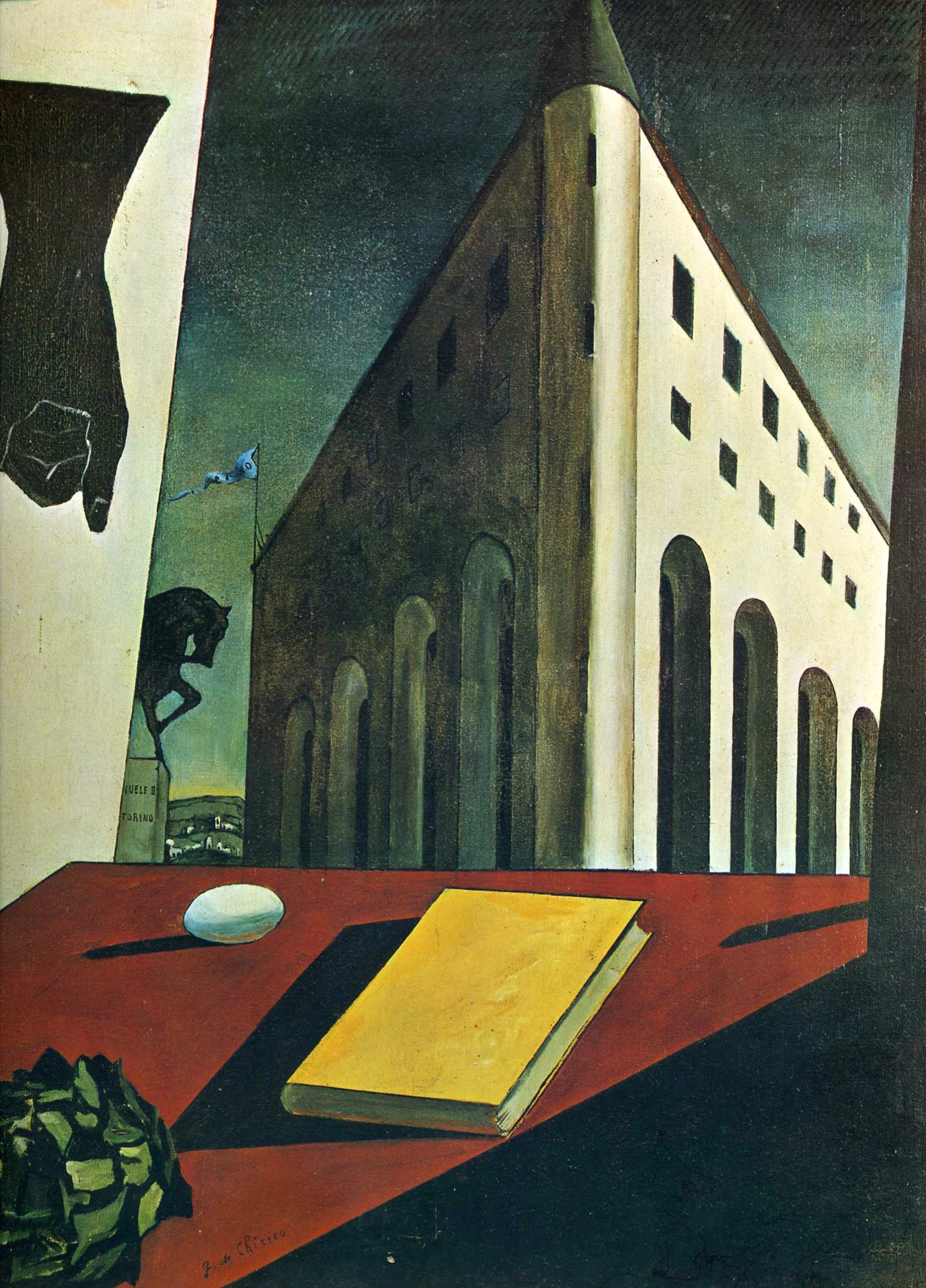
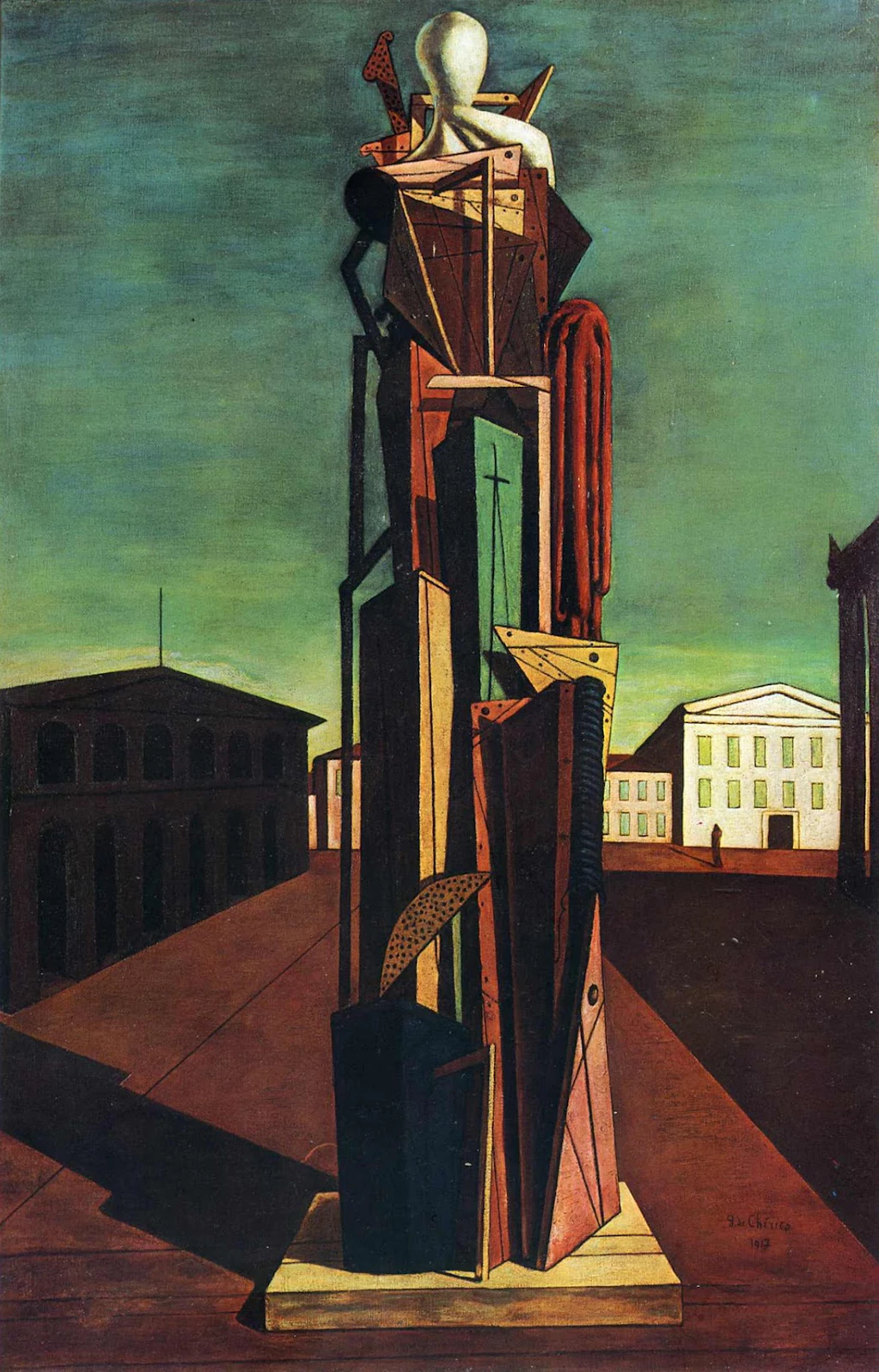
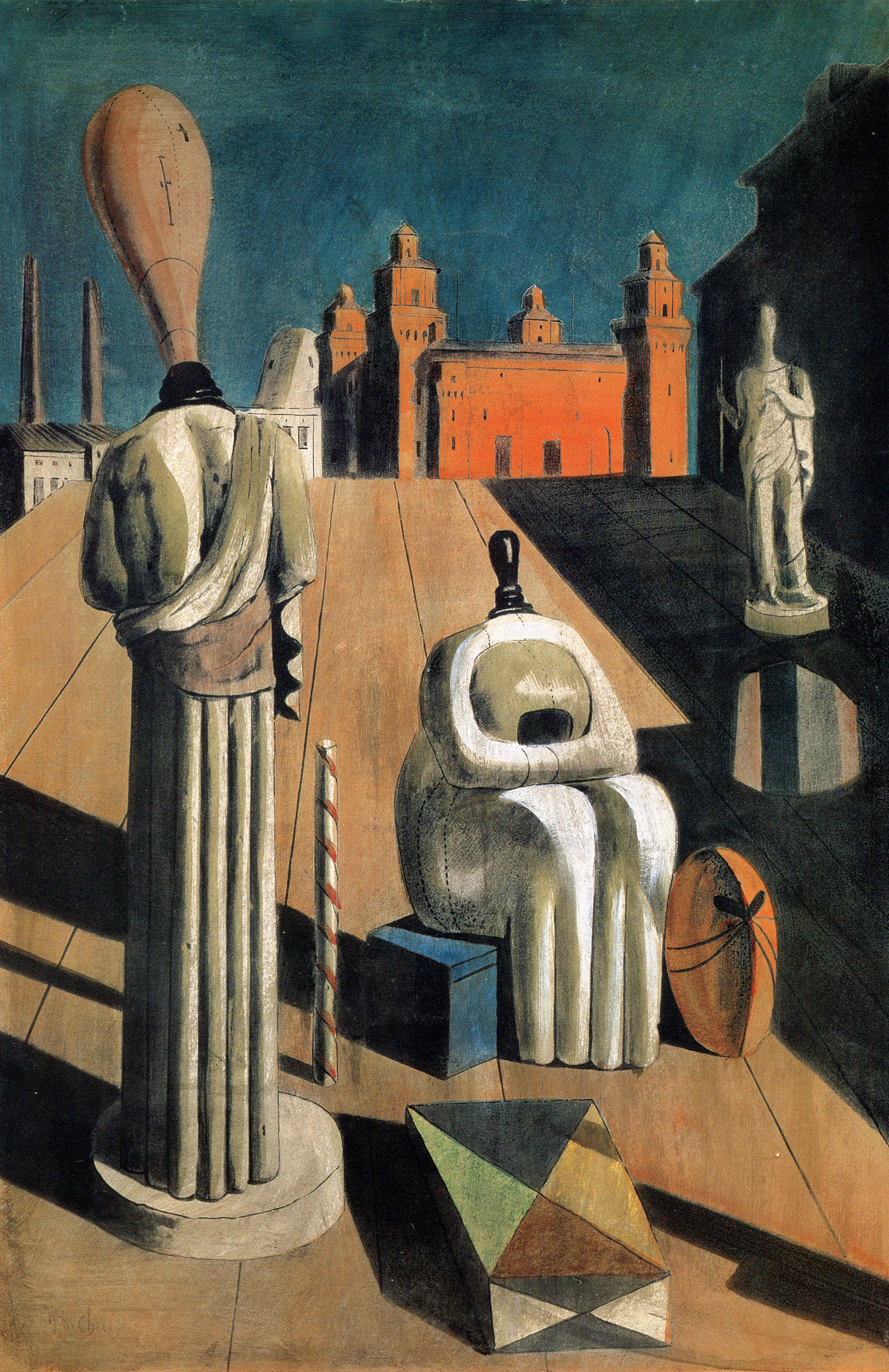
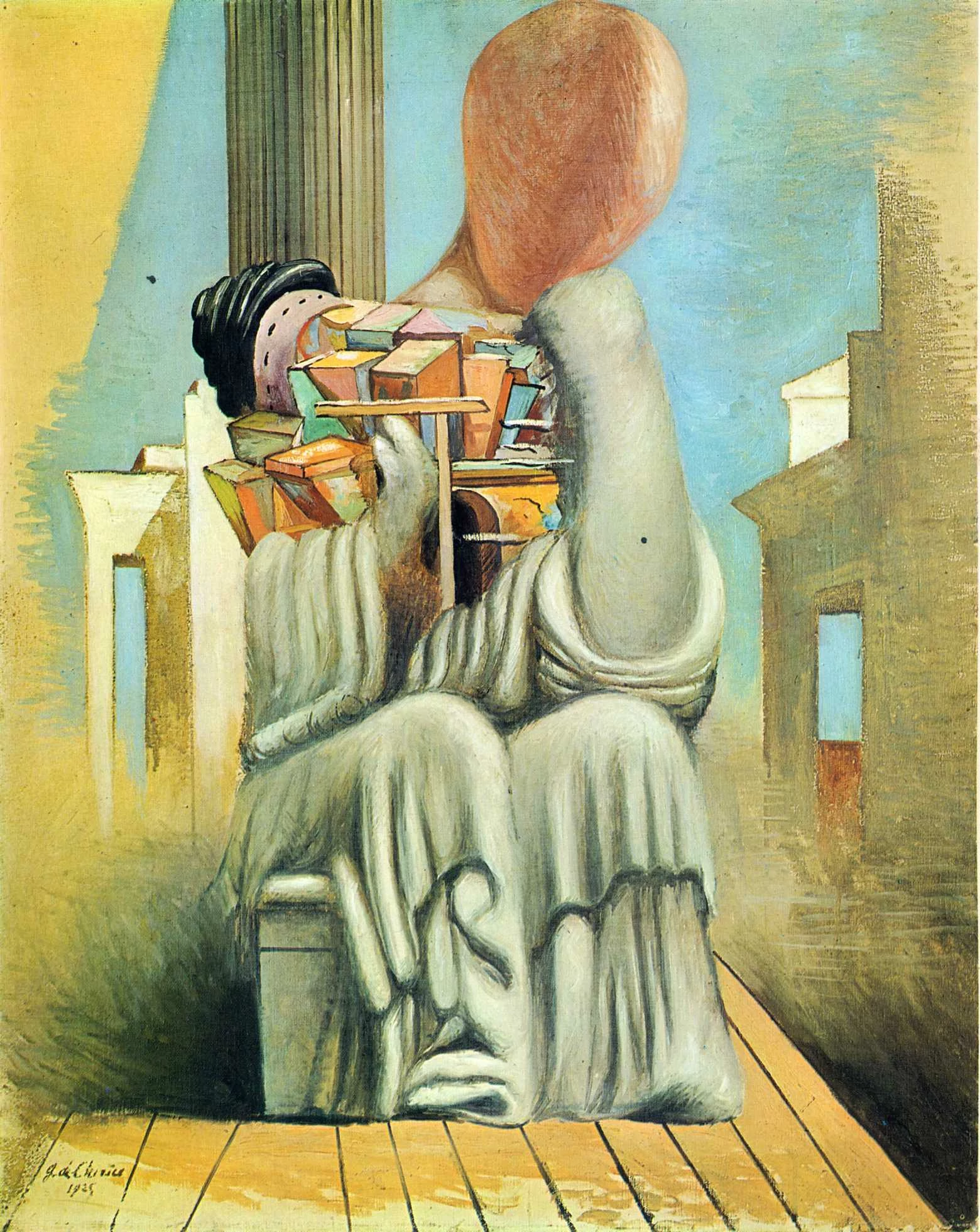
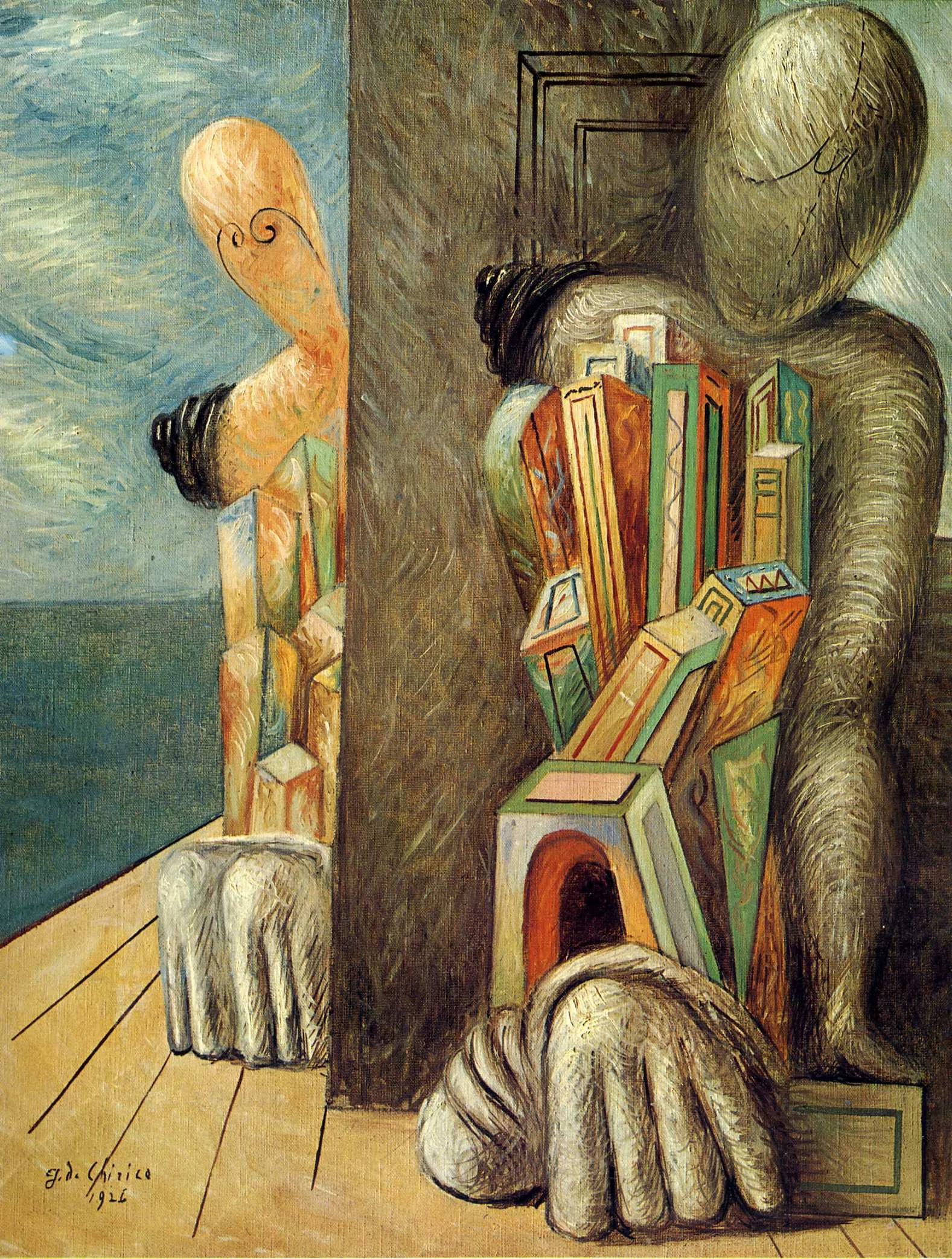
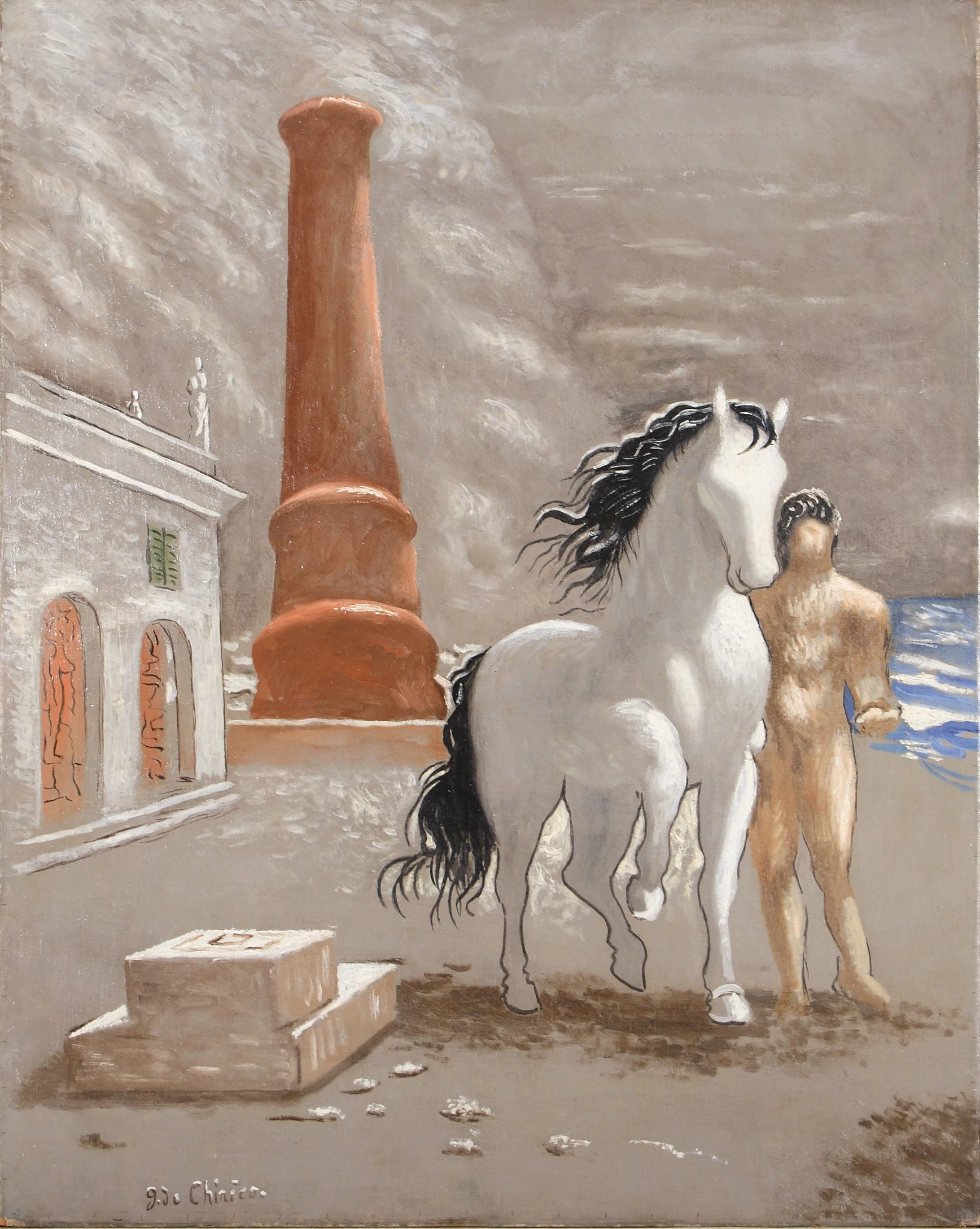

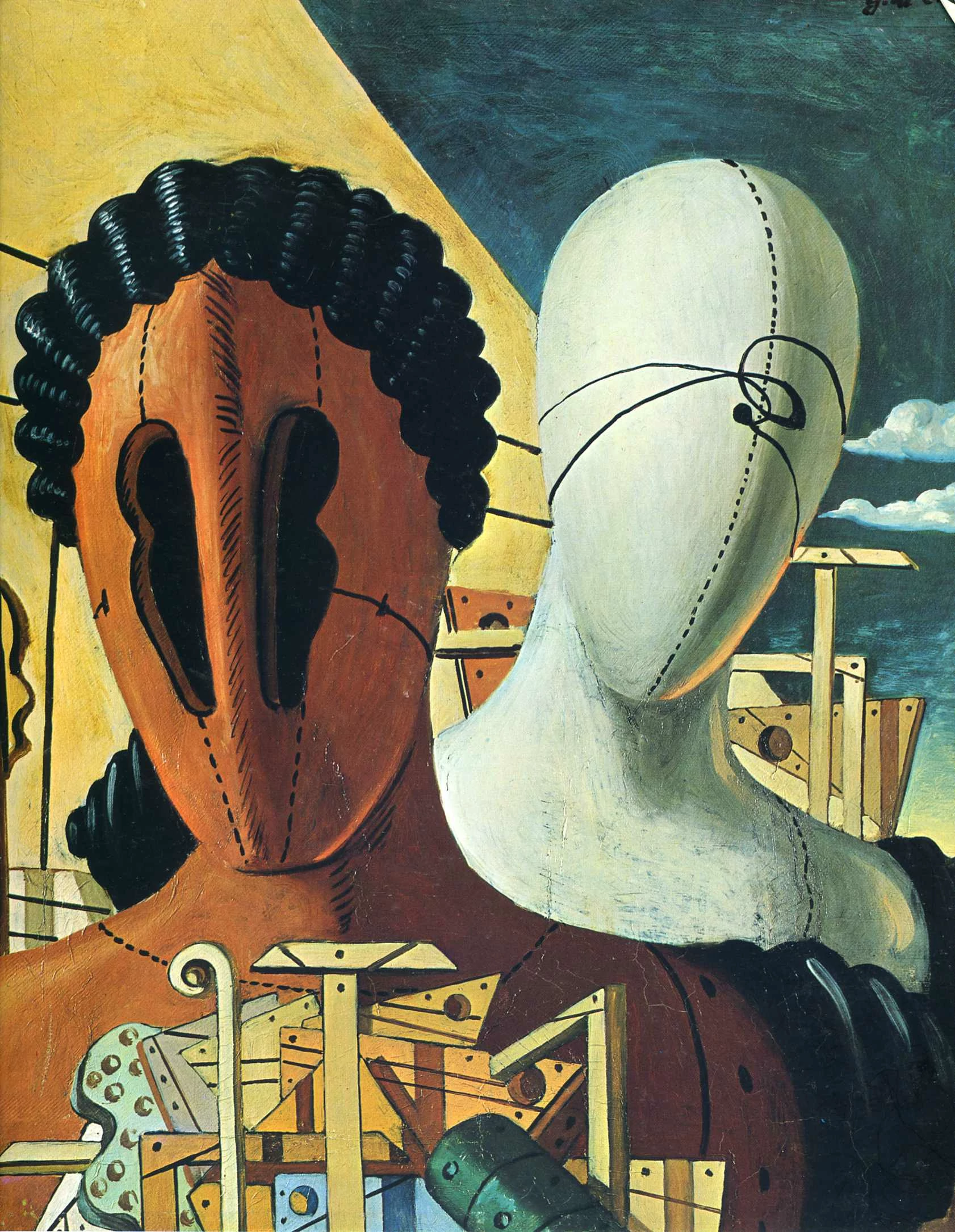
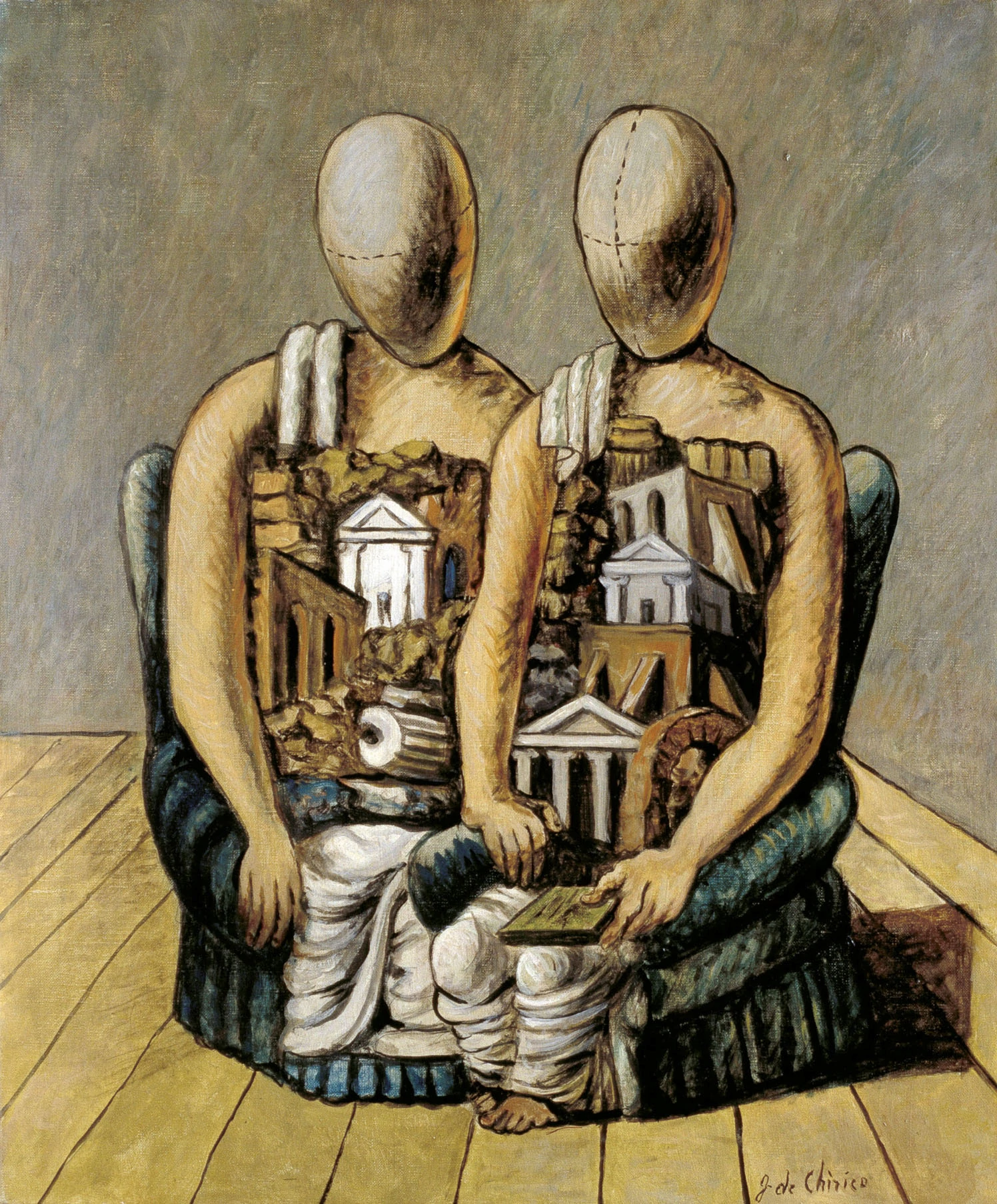

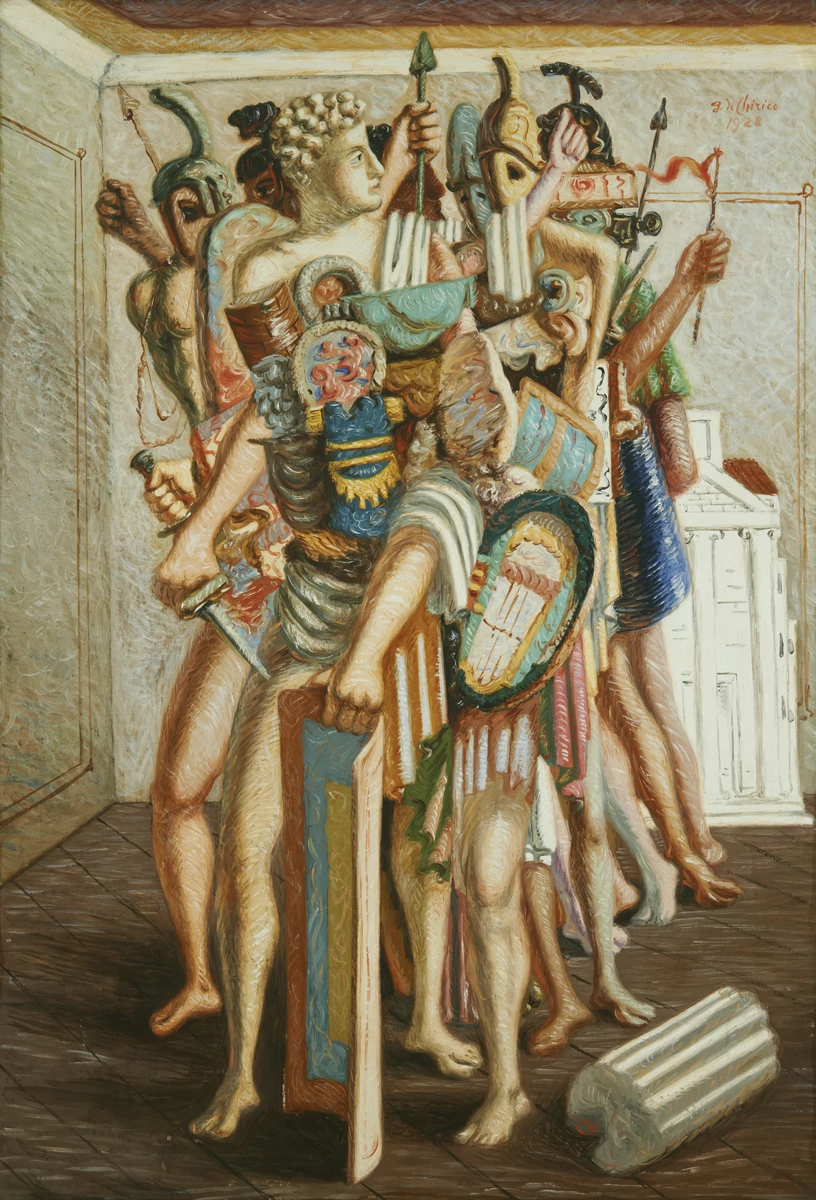



America is no longer a new world but is, and always will be, another world. It is ... a question of molecules, of climate, of different atmosphere, of the special quality of the sun’s rays.
It is often said of a picture: this picture is not extraordinary, it is nothing remarkable, but “it shows great sensitiveness”.
